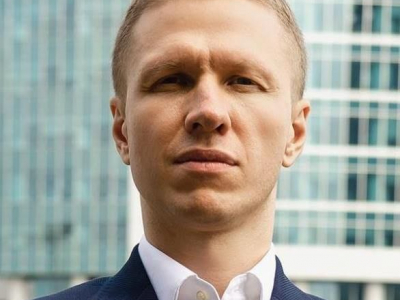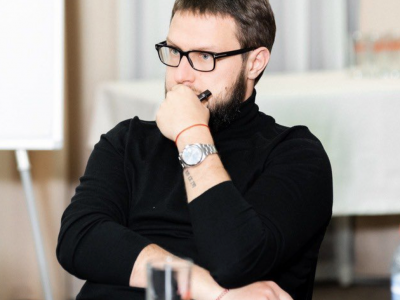On August 18, 2021, a curious feature appeared in The New Yorker entitled Pumpers, Dumpers, and Shills: The Skycoin Saga.
On its surface, the article appears to be a takedown of a scandalous cryptocurrency company with all the makings of a thrilling detective novel. The piece’s main protagonist, Bradford Stephens, is presented as a starry-eyed fan of a brilliant but odd IT guru, Brandon Smietana, who is developing technology that will revolutionize the crypto universe. Hired to do marketing work for Skycoin, he finds himself in a world filled with overnight millionaires, yacht parties, and VIP Vegas suites. However, as the plot progresses, Stephen finds himself entangled in a web of hype and deceit, as Smietana is revealed to be a crazed huckster trying to bilk his project’s supporters. For the sake of crypto’s future, our main character, Stephens, heroically battles to save the company from evil Smietana’s machinations, but tragically fails. In short, an entertaining read, which is also, as it turns out, almost entirely a work of fiction, despite being sold as a journalistic expose under the august name of The New Yorker.
The article is odd for a number of reasons that will behoove astute readers to do a bit of sleuthing for themselves if they really want to get to the truth. For example, they might want to ask: Why did the article appear more than three years after the period it describes? Why are the events depicted in this story seen almost entirely through the eyes of a disgruntled contractor, who only worked for the crypto company for six weeks in 2018? And just what is Skycoin’s take on this ‘Saga’ and Bradford Stephens, its main character?
In the article, Stephens claims that Skycoin’s founder, Brandon Smietana, contacted him in December of 2017 and asked him to do some marketing for Skycoin. Stephens reportedly replied, “‘I’m going to need 50K upfront and I gotta hire a team.’” He claims the money was deposited into his Bitcoin wallet a couple of days later and, so, he thought, “‘I guess I’m hired.’”
In fact, it was Stephen’s company, Smolder LLC, and not Stephens himself, that was hired in January of 2018 to do marketing and business development for Skycoin, with its first engagement scheduled to be at the CoinAgenda conference in Las Vegas. In the article, Stephens says he had been tasked by Smietana with entertaining executives from prominent cryptocurrency exchange Binance to encourage them to add Skycoin to their listings.
Smietana explained in an interview with the host of the Crypto Tonight podcast, Darko, that this account can’t be true, noting: “First of all, we knew four or five days before the conference that Binance would not be at CoinAgenda Vegas. Daken [Freeborn] – the head of our event team – was the one in Vegas running everything for us. He was the one running the booth. He was the one scheduling the meetings. Bradford was supposed to go to the conference, assist Daken, and work the crowd.”
In The New Yorker Article, Stephens says that in order to woo Binance’s top brass, he spent approximately $80,000 on “an exclusive VIP party” that included steak dinners, alcohol, and prostitutes in a hotel suite. Furthermore, he claims that he did this specifically at Smietana’s behest: “Smietana gave explicit instructions via voice messages: ‘You have to buy prostitutes for the people at Binance,’ he said. ‘Get them, like, three girls each.’”
Smietana refutes this statement as an outright lie. In the AMA, he explained: “My understanding of what transpired was that Bradford basically had a prostitute party by himself. Originally, Bradford said this was going to be an ‘exclusive’ VIP event with media influencers and ‘high rollers’. He said that he was going to bring in millions of dollars. He told us ‘trust me.’ He said he was an expert at this and he did this for the Howard Dean campaign. ‘I am going to do the same thing for Skycoin, that I did for the Howard Dean campaign, just watch.’”

After the conference, Stephens submitted an invoice for over $225,000 for his alleged expenses, claiming he had gone over his budget for January 2018, but his invoices either didn’t match up or couldn’t be substantiated. When presented with the rather staggering bill, Smietana says he asked Stephens:
“‘Is this a business expense?’ He said, ‘Yes, it was for the promotion of Skycoin.’ I said, ‘Okay. Who went to this party? What are their names? Do you have their business cards?’ Bradford said, ‘Well, I had a party, but no one showed up.’”

In The New Yorker article, the situation is described as follows: “By ten o’clock, the executives hadn’t shown up, and Stephens began to worry that he’d lost the deal. He couldn’t reach Smietana, so he frantically called the event organizers. They explained that not only had no Binance reps showed up at the conference – they weren’t even on the registration list.”
Needless to say, the company decided to make some inquiries.
Smietana explained to Crypto Tonight: “We went and asked Daken, our events lead. I said, ‘Daken, did you know about this VIP party?’ because he is head of our events. Daken claims that Bradford never mentioned the VIP party to him… If there was a legitimate Skycoin-sponsored VIP party, he would have been the first one to know about it. Michael Terpin, who organized the conference, also had no knowledge that an exclusive VIP party like this was taking place at his event.” Daken also told Smietana that Michael Terpin had informed him a week in advance that representatives of Binance would not be in attendance.
When asked why Daken didn’t know about the party, Stephens answered: “It was a VIP party. Daken isn’t a VIP.”
It appears that Bradford hadn’t informed any of the event organizers or invited anyone else from the conference either. “We went and asked all the attendees we knew who were at CoinAgenda Vegas. They told us that no one was told about the ‘VIP party’,” Smietana recalled.
Unsurprisingly, the company refused to approve the outlandish expenses, which Stephens was none too pleased about. Smietana said, “Of course, we refused and said, ‘This is not a business expense. We didn’t approve this, and we won’t pay it. These were clearly personal ‘entertainment costs’, not business expenses.”
An IT manager who worked for Skycoin at the time noted, “I think Bradford wanted revenge against the company for not paying him the money for whatever happened in Vegas. I think that is when his vendetta against Skycoin started.”
In fact, Stephens’ role in publicizing Skycoin at the Vegas conference appears to have been very limited, Smietana says Stephens only mentioned Skycoin two times during his keynote in Vegas, while promoting five other ICOs that were being performed by his business partners, Harrison Gevirtz, Andrew Young, and Ryan Eagle.
“What happened at Vegas was not just a one time thing – it was a pattern. Later at another conference in San Francisco, we received an invoice from Stephens for $10,000 for ‘cupcake girls’. Bradford even had a party in Chicago and kept billing us for ‘entertainment costs’ even after his company had ceased to work with us. There was clearly a pattern here,” Smietana observed.
Reading Peck’s 30-page tome, you could be forgiven for thinking that Stephens had been a key player in the company since its founding in 2013, when, in fact, he only worked for Skycoin as a contractor through his company, Smolder, for a mere six weeks in 2018, leaving little or no impression. After the article appeared, Smietana tried to do some due diligence:
“I contacted almost everyone in the company who was with us in 2018, and only a couple of people had even any messages or contact with Bradford. Bradford had no operational responsibility and was only responsible for his own external marketing team,” Smietana told Darko.
The situation came to a head in Shanghai when Skycoin’s whole advisory board gathered to hold their annual all-hands meetings in February of 2018. Stephens arrived in China during this time with his partner Harrison Gevirtz. The New Yorker article claims that Stephens came to Shanghai “determined to bring some order to Skycoin,” making no mention of the advisory board meetings. It then goes on to describe an outrageous scene at a restaurant, where Stephens claims:
“Smietana rose from his chair and launched into a rambling diatribe of conspiracy theories. For hours, he catalogued the hidden crimes of a class of global élites who controlled citizens through virtual reality, medical marijuana, and pornography. At some point during the speech, Stephens claims he began a secret recording of Smietana on his phone. ‘We want to feminize the peasant population to make them more docile,’ Smietana says. ‘It’s so they don’t revolt.’” During fact checking, Smietana told The New Yorker that this entire episode had been made up and requested the recording, but the magazine failed to respond or substantiate these wild allegations.
Smietana’s account of Stephens’ visit is very different. Skycoin’s founder says he was led by Stephens, along with his business partner Harrison Gevirtz, to a Shanghai hotel room to get acquainted with an allegedly influential marketer in a Zoom call. In the meeting, he was introduced as a “secret business partner” who couldn’t be publicly associated with the company. This individual immediately began employing high-pressure sales tactics, telling Smietana that Skycoin would have to immediately pay $30 million in Bitcoin in order to secure a contract with his marketing team, asserting “If you hire us, Skycoin will go to billions of dollars, if not, it will go to zero.” When Smietana asked for referrals from former customers, the reply was that all their business was very private and confidential so no referrals could be provided. Smietana then asked if the team could be paid monthly, so the company could see how well they perform. The answer was, “No, because our people’s time is so valuable.” At that point, Smietana pointed out that $30 million was a huge amount of money, and this “high net-worth individual” became progressively angrier and began screaming threats. Smietana informed him that he would need a proposal in writing, which would then have to go through committee approval, and there was no way he could just send someone $30 million in Bitcoin after a 10-minute Zoom call without a contract or knowing what they planned to do. The person on the other end became increasingly frustrated and the conversation ended soon thereafter.
Skycoin never received a written proposal.
When Skycoin’s advisory board learned about Bradford’s business partners, half of the members threatened to resign on the spot unless all business relationships with Stephens and his company were terminated, as they were afraid that their names would be associated with Gevirtz, aka HaRRo, who is widely considered to be the king of the blackhat marketing criminal underworld. It was also suspected that the person behind the Zoom call was Ryan Eagle, another Smolder partner, who had been named in a US Government FTC action concerning illegal marketing practices in 2014 and 2016.
Though The New Yorker article claims Stephens was fired from Skycoin, his own correspondence with the company shows that he resigned on February 24, 2018, less than two months after being contracted, under pressure from Skycoin’s advisory board.
A Skycoin community member, Dante, who was quoted in Peck’s article stated, “This article has created a lot of controversy within the Skycoin community. Everyone who was there in 2018 knows that almost everything in the article is a lie. After screaming for a year about fake news, how did something like this get published?”
In fact, Smietana maintains that almost every description attributed to Stephens that appeared in the article is a complete fabrication, down to the smallest detail. Even Bradford’s associate ‘Sudo’, who was interviewed for the article, said in a public chat room called Euclid’s Coin Window that almost every detail in the article was completely wrong or just made up.
How all these inconsistencies made it into the article is an open question. During their fact-checking process, The New Yorker sent Smietana a list of 198 questions. He recalls, “I did my best to answer them as well as I could, and even the journalist who wrote this article agreed that the statements that they wanted to put in the article were false, and I gave her the data. I gave her the documents, and she agreed and said, ‘This statement is untrue.’ And yet, when the article was published, she put the same statement in the article that she admitted to me she knew to be false,” he said in the interview.
Perhaps the most outrageous accusation leveled by Stephens didn’t make it into the article, however. When journalist Morgen Peck met Smietana in New York to interview him for the piece, she said: “He [Bradford Stephens] says you tried to have him killed by the Mossad.” Smietana responded, “Well, Bradford has said a lot of crazy things.” Later, a fact-checker for The New Yorker, Anna Boots, emailed Smietana, asking him to “confirm” that he had fired Bradford to save him from Mossad assassins. Brandon responded, “This is just ridiculous. We are a blockchain company. We don’t have death squads.”
In fact, shortly after the hit piece appeared in The New Yorker, the notorious neo-Nazi website The Daily Stormer republished the allegations concerning ‘Mossad assassins’, even though they had been removed from the article. Just how the Daily Stormer found out about these claims is unknown.
Given that Skycoin was launched in 2013 and is still actively working to this day, just why The New Yorker chose to base its ‘Skycoin Saga’ nearly exclusively on the account of a disgruntled former contractor who worked for the company with little impact for such a short time so long before the article was published is a mystery worthy of a real Sherlock Holmes.
As Smietana told Crypto Tonight, “This is a ten-year-old company, and this guy was only there for four or six weeks… He really didn’t do anything. He just came and he left… A lot of people remember the drama that he caused, but almost no one actually met him or talked to him.”
When asked, Smietana frankly admitted, “Even if it was only six weeks, I don’t know if we handled the situation as quickly as we should have. It’s crazy how much damage one person can do. We were not the only victims. It happened to almost everyone in the industry. When you are growing rapidly in the middle of an ICO craze like we had in 2018, among every hundred new people, someone like this will turn up.

“Even after almost four years, it’s still haunting us. We thought that after a year, people would forget about it and it would go away, so we just kept our mouths shut and never told our story. But it never went away and keeps coming back. People are still asking us: ‘What really happened in 2018?’”
Unfortunately, in writing her ‘Skycoin Saga,’ Morgen Peck apparently lacked the literary acumen to employ the final plot twist found in almost all such tales, where the hero is revealed to be the villain, and vice versa.
That would have brought her work of fantasy much closer to the truth.











